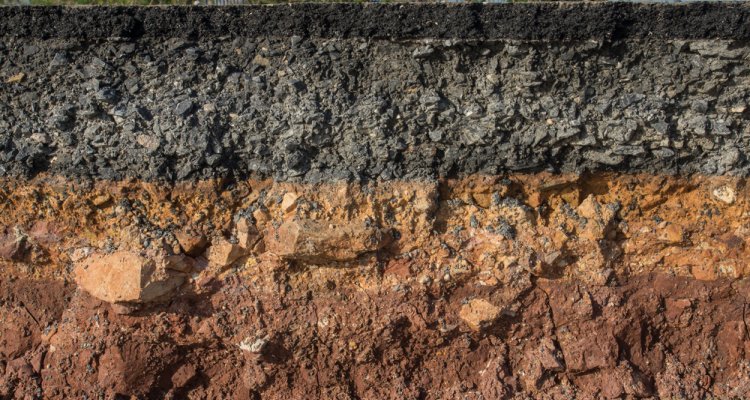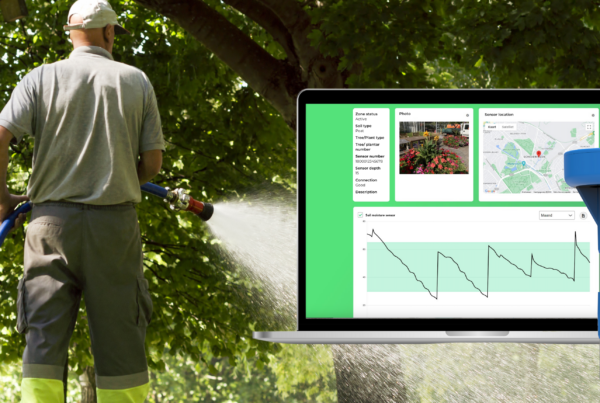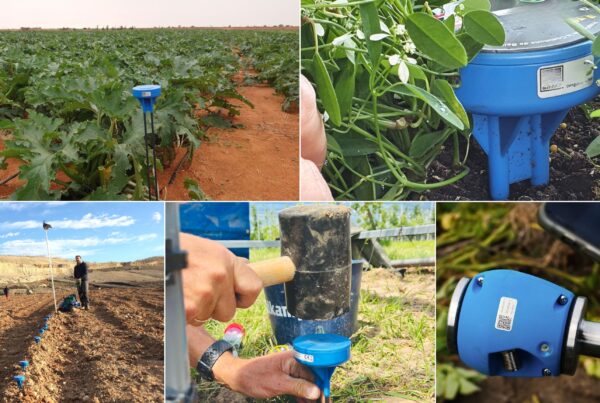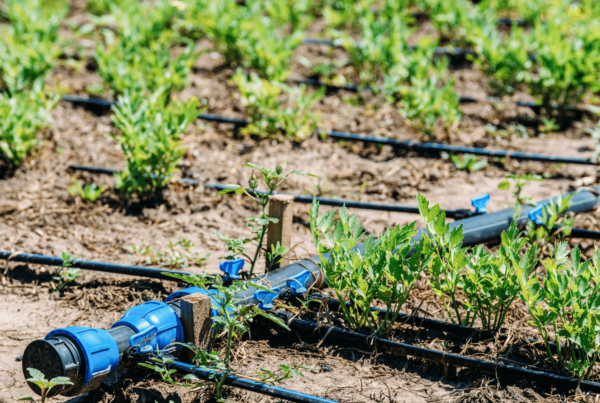Soil horizons, capillary rise, and moisture management
In this series we help to identify actionable insights with soil moisture data by identifying soil moisture behavior. Why are there fluctuations in soil moisture levels from day to night? What is capillary function, and how can it be identified across soil horizons? What is the role of plants and capillary function? How do different soil textures influence water flow within soil? We’ll aim to answer these questions and more in this series on interpreting soil moisture data and capillary function of the soil.
Soil Horizons and Moisture Management
Soils in an area are not homogenous, and the texture composition differs not only laterally, but along the soil horizons as well. This is why understanding the behavior of soil and water at the root zone is important for water management.
This variation in soil texture at different horizons creates what is known as a “soil texture gradient.” Managing irrigation in such situations requires a tailored approach to address the unique water-holding and drainage characteristics of each horizon. Here’s how this influences water and irrigation management:
- Understanding Soil Horizons: Soil profiles consist of different layers or horizons, each with its own unique characteristics, including soil texture, organic matter content, and compaction. The most common soil horizons are the O horizon (organic matter), A horizon (topsoil), B horizon (subsoil), and C horizon (parent material). The texture can vary significantly between these horizons.
- Identifying Water Movement and Retention: Water moves differently through each horizon based on its texture. Sandy horizons facilitate rapid water drainage but may struggle to retain moisture. In contrast, clayey horizons hold water effectively but can limit drainage, leading to waterlogging.
- Irrigation Planning: Effective irrigation management in soils with varying textures involves understanding the soil’s water-holding capacity and drainage characteristics at each horizon. This knowledge is essential for deciding when and how much to irrigate.
- Zoning and Targeted Irrigation: One approach is to divide the field into zones based on the soil horizons. Each zone can be managed separately, with irrigation schedules and amounts tailored to the specific needs of that horizon. This approach, known as precision or targeted irrigation, optimizes water use.

- Use of Soil Moisture Sensors: Soil moisture sensors placed at different horizons can provide real-time data on soil moisture levels. This information allows for precise irrigation management, ensuring that each horizon receives the appropriate amount of water to meet the needs of the plants.
- Crop Selection and Root Depth: Crop selection is crucial. Some crops have deeper root systems that can access water from lower horizons, while others rely on moisture in the upper horizons. Understanding the root depth of your crops helps in determining the appropriate irrigation strategy.
- Amending the Soil: In cases where soil horizons have extreme characteristics (e.g., very sandy or clayey), soil amendments can be used to improve water retention or drainage. Adding organic matter to sandy horizons can enhance water-holding capacity, while adding drainage materials to clayey horizons can improve drainage.
- Monitoring and Adaptation: Regular monitoring of soil moisture levels, combined with observations of plant health, is essential. Adjust irrigation practices based on actual conditions and crop performance.
- Preventing Water Stress and Waterlogging: Proper irrigation management helps prevent water stress (insufficient water) and waterlogging (excessive water) in different soil horizons, both of which can harm crop health and yield.
Managing irrigation in soils with different textures at different horizons requires a thoughtful and adaptable approach. Understanding the unique characteristics of each soil and employing techniques such as zoning, soil moisture sensors, water application is optimized and overall plant and soil health improved.
Continue the learning with identifying the influence of soil texture on water functionality of the soil with these related articles:
About Sensoterra
Sensoterra is a pioneering leader in the field of wireless soil moisture sensors, offering cutting-edge IoT soil moisture sensor solutions for smart agriculture. Our state-of-the-art Sensoterra soil moisture sensors are at the forefront of agriculture IoT, providing unparalleled soil moisture monitoring capabilities.
Our commitment to precision agriculture technology allows farmers to make informed decisions, optimize their irrigation systems, and embrace sustainable farming solutions. With Sensoterra, access to real-time soil moisture data is at your fingertips, enabling precise water management and water resource management for your agricultural operations.
Sensoterra, established in 2015, with its headquarters in Houten, The Netherlands, develops water management solutions for agriculture/horticulture, smart city management, and water governance. Sensoterra has over 12,000 sensors in the ground globally, and generates hundreds of thousands of data points for smart water management, daily. Learn more at
Contact for more information, pictures and/or interview requests:
Jessica Nuboer
Marketing & Communications
Sensoterra
Email: [email protected]





